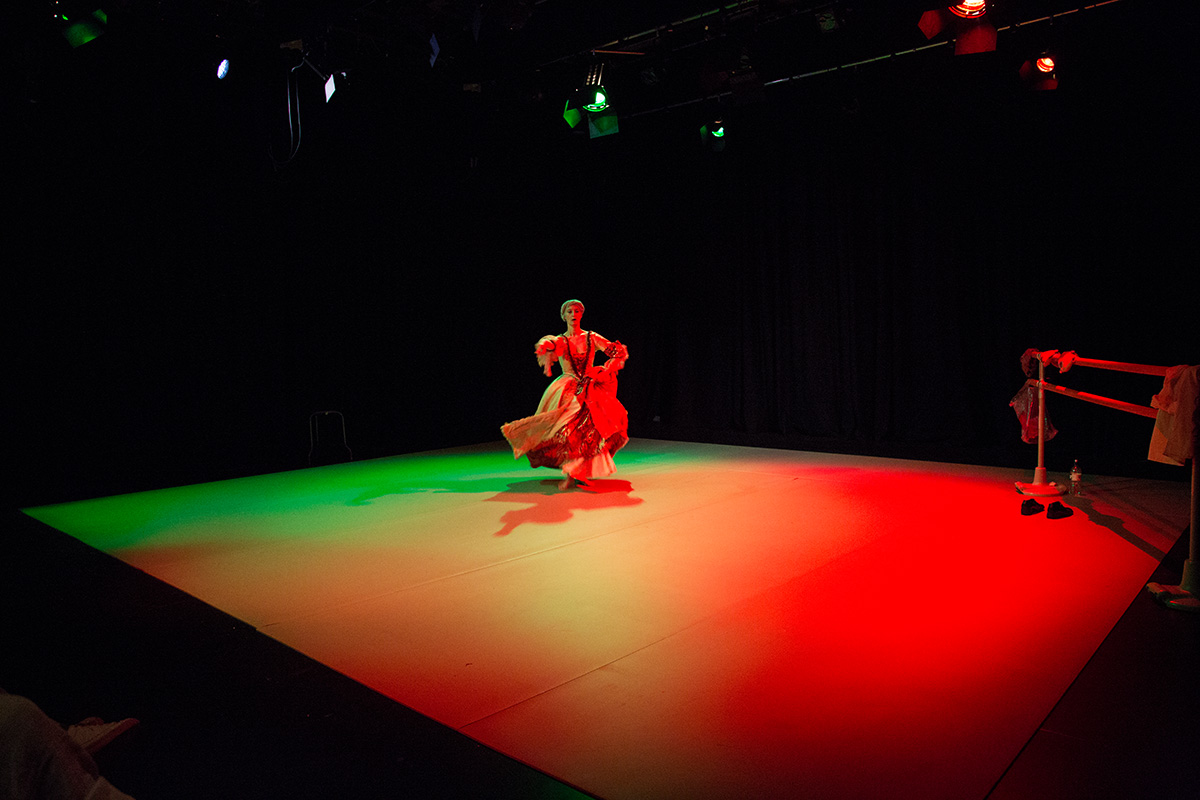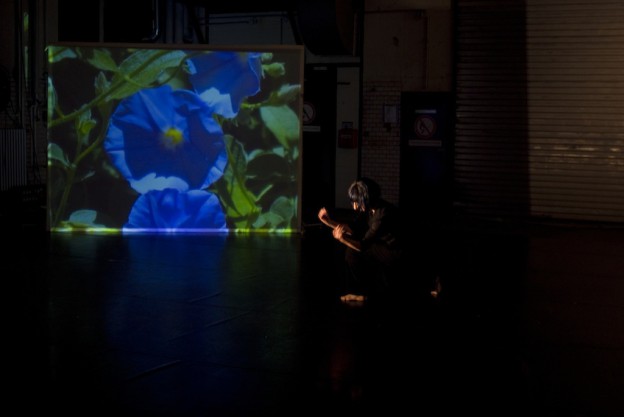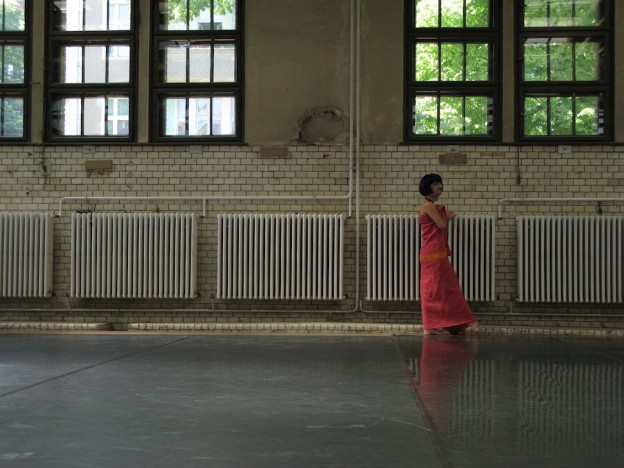Martin, S. (forthcoming 2024) Performing Bodies / Performing Relationships. In: Tau, R., Kloetzer, L., Henein, S. (eds.) Barefoot Academic Teaching: Performing Arts as Pedagogical Tool in Higher Education. Edition Scenario. Berlin: Schibri. Bauer, L.; Boos, P.; Martin, S.; Nöthen, E.; Reuter, G. (2023) Er-Fahrung – Cycling Spaces im Salon Raumverstehen: Mobilitätspraktiken im Quartier geographisch-künstlerisch beforschen.… Continue reading publications
Tag:Ageing
Dancing Age(ing) lecture performances 2019 – 2023
24 May 2023 Jung bleiben und Sterben üben – eine Lecture Performance zu Alter(n) und Tanz, Ringvorlesung, Zentrum für interdisziplinäre Alterns- und Care-Forschung, Karl Franzen Universität Graz 4 December 2022 Üben, Üben, Üben NachWieVor – Fachtag Tanzperformance und Alter(n), Ehrenfeld Studios Köln, Germany 30 January 2020 Dancing Age(ing): an Ongoing Practice and a Danced Lecture… Continue reading Dancing Age(ing) lecture performances 2019 – 2023
Was ist Tanz? Seniorenakademie SKAT, April 2022
Centre Français BerlinMit Susanne Martin und Jan Burkhardt Durch eine Mischung von Vortrag, Workshop und Performance widmen wir uns einigen zentralen Tanzthemen wie zum Beispiel: Wonach gucken wir, wenn wir Tanz sehen?Woran denken wir, wenn wir selbst tanzen?Wie verhält sich Tanz zu Ton und zu Musik?Was könnte man wissen und was will ich wissen über… Continue reading Was ist Tanz? Seniorenakademie SKAT, April 2022
Artistic Research Lecture Performances – other themes
– 3 April 2022 Miteinander improvisieren: Ein Tanz, ein Vortrag und zwei Übungen zum Sich-Anstecken, Lecture Performance, Symposium Gruppenpsychoanalyse, Wien – 25 October 2018 Ties & Bonds, together with Alex Nowitz, conference Alliances & Communalities, University of the Arts, Stockholm, Sweden – 7 April 2018 Learning. Teaching. Dancing. An interactive danced lecture, Tanzfabrik Berlin –… Continue reading Artistic Research Lecture Performances – other themes
Dancing Age(ing) lecture performances 2017
September 2017, Searching for the Fountain of Age – a danced lecture, Colloquium on Artistic Research in Performing Arts (CARPA 5), Theatre Academy and the Academy of Fine Arts, UniartsHelsinki, Finnland.See publication here 7 July 2017, Improvising Age(ing) or dancing around the fountain of youth and the fountain of age – a danced lecture and… Continue reading Dancing Age(ing) lecture performances 2017
What do I teach (in 2019)?
My teaching deals mainly with dance, improvisation, performance, the body in different contexts, artistic research methods, or topics such as such as dance & age(ing) or improvisation & engineering, which developed out of my own artistic research. In which formats do I teach? – Workshops / Classes = practice oriented, limited time for verbal interaction… Continue reading What do I teach (in 2019)?
Dancing Age(ing) lecture performances 2014 – 2016
7 Dec 2016, Performing Age(ing): Sliding through Time – a danced lecture, Academy of Music and Drama, University of Gothenburg, Sweden 1 Dec 2016, Performing Age(ing): Sliding through Time – a danced lecture, SITE, artistic platform and production house for contemporary performing arts, Stockholm, Sweden 29 Nov 2016, Performing Age(ing): Sliding through Time – a… Continue reading Dancing Age(ing) lecture performances 2014 – 2016
The Fountain of Age 2015
Photos W. Gillingham Sutton A Solo / Dance / Piece / Lecture / Performance / Research This solo performance constitutes one of two artistic outcomes I present as part of my PhD dissertation Dancing Age(ing) at Middlesex University London. Premiere: 18 June 2015, Ravensfield Theatre MIddlesex University LondonDuration: 40 minSupported by: Middlesex University London, Tanzfabrik… Continue reading The Fountain of Age 2015
Korsobad: On Stage (Berlin 2014)
Duet Todd Ford & Susanne Martin Korsobad: on stage : short dance performances, live music, drinks and DJ, curated by Gabriele Reuter 07.02.2014With: Lutz Streun, Gabriele Reuter, Zaratina Randrianantenaina, Susanne Martin, Annapaola Leso, Todd Ford, Maria Marta Colusi, DJ Montage
Dancing Age(ing) lecture performances 2013
21 November 2013 18800 Bewegungen und 1000 Worte, an deren Ende wir alle 30 Minuten älter sein werden – Ein getanzter Vortrag, Werkstattgespräch kulturelle Generationenarbeit, Berlin 12 October 2013 Dancing Age(ing): An improvisation-based performance of 18800 movements and 1000 words during which we grow 30 minutes older, Symposium of Society for Dance Research at Middlesex… Continue reading Dancing Age(ing) lecture performances 2013
The Fountain of Youth & The Shadow 2013
Photos Lars Åsling, Graphic Sophie Jahnke The Shadow and The Fountain of Youth – Two Dances on Staying Alive As a new step in their long-term collaboration Bronja Novak Lindblad (Göteborg) & Susanne Martin (Berlin) have created each a solo on the same subject: the facts of getting older and sustaining in the world of… Continue reading The Fountain of Youth & The Shadow 2013
Susi & Gabi’s Salon #4 The A-word: Ageing 2011
Salon Guest: Amos Hetz04.09.2011 at Tanzfabrik Berlin Amos Hetz is a dancer and movement teacher, looking for expanding his movement vocabulary through the use of the Eshkol Wachman Movement Notation and the heritage of the somatic learning. He composes solo dances, dance-collaborations, and movement games. For the last 22 years he was artistic director of… Continue reading Susi & Gabi’s Salon #4 The A-word: Ageing 2011
Rosi tanzt Rosi – The Conference 2009
Concept and performance: Susanne MartinDramaturgy: Brenda WaiteMentoring: Andrew MorrishChoreographic support: Meagan O’SheaDuration: 45 min.Supported by: Hochschulübergreifendes Zentrum Tanz Berlin, Mimecentrum Berlin, Tanzfabrik BerlinPremiere: BAT Studiotheater Berlin July 2009Touring: Berlin, London, Plymouth and Granada (in Spanish language) Rosi tanzt Rosi – The Conference is a 45 min solo performance with three characters; with Rosi’s enigmatic choreographies… Continue reading Rosi tanzt Rosi – The Conference 2009
Rosi bei Freistil – Die Kunst der Improvisation (2008/2009)
„Material zu Rosi tanzt Rosi“ Eine Soloimprovisation Freistil at Tanzfabrik Berlin 6. 4. 2008 Was macht Tanz lesbar für die Zuschauer?Was ist der Text eines Tanzes?Wie erhalte ich meine Freiheit in der Improvisation, wenn ich mit klaren thematischen Grenzen und Narration arbeite? “Neuigkeiten aus der Rosi-Welt“ eine Improvisation von Susanne Martin Freistil at Tanzfabrik Berlin… Continue reading Rosi bei Freistil – Die Kunst der Improvisation (2008/2009)
Rosi tanzt Rosi – The Winter Version 2009
Performances at Critical Path, Sydney and Lucy Guerin Studio, Melbourne in January 2009 during the residency at Critical Path, and as semester-presentation for MA SODA at HZT Berlin at Uferstudios Berlin “During her stay in Sydney and Melbourne she will work on her solo Rosi tanzt Rosi, dealing in it with the notion of narration… Continue reading Rosi tanzt Rosi – The Winter Version 2009
Rosi tanzt Rosi – The July/August Version 2008
Performances: July 2008 at Uferstudios Berlin as part of MA SODA research showings andAugust 2008 at HALLE Berlin as part of the International Dance Festival Tanz im AugustSupported by: HZT Berlin Rosi tanzt Rosi is a piece, a process, a movement towards a fictional character; it’s also my continuous research subject/object throughout my MA studies… Continue reading Rosi tanzt Rosi – The July/August Version 2008
Rosi tanzt Rosi 2008
SoloDuration: 10 min.Performances: 3./ 4. Jan. 2008 at Sophiensaele Berlin during the festival Tanztage 2008Supported by: HZT Berlin „Ist das nicht ein bisschen…….?“„Aber die Leute lieben sie“„Irgendwann muss doch mal Schluss sein …. Du hast schon den Artikel gelesen……? (…) und zeugt ihr Tun eigentlich von einem fortschreitenden Realitätsverlust oder eher von selbstbewusst zukunftsweisender Verschiebung… Continue reading Rosi tanzt Rosi 2008
JULIO (2006)
A piece about longing, ageing and the music of Julio Iglesias JULIO is a patchwork project. It has been presented internationally in different versions and lengths. The two solos can also stand for themselves and have been performed independently. The group version with guest lecturer and singer is at the moment only available in German… Continue reading JULIO (2006)
Golden Playa (2006)
A film by Andrea Keiz and Susanne Martin, 17 minspoken language: German, with English and Spanish subtitles In this documentary film (arty as well) I wanted to give the word to the old themselves. With the video artist Andrea Keiz I spent two weeks during winter season in a typical “German” hotel in Mallorca, contacting… Continue reading Golden Playa (2006)










